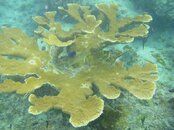Jersey
Contributor
You weren't robbed down there by any chance?
Ah, no, but I try to play it smart. I leave the jewelry home, fish don't care. I leave a ratty T-shirt and pink crocs in my truck. I feel far safer on Bonaire than any other islands I frequent. I lock the condo, don't leave money or technology toys laying around. Again, on Bonaire I feel safer than I did walking past the Methadone clinic on my way to my Tuesday morning meeting in North Philadelphia.
---------- Post added March 25th, 2013 at 10:25 AM ----------
Round trip from Newark is $604 (as of now) for June 7 - 15. (From Michigan it's about $680, which is pretty good,)
Problem with airfares is that it seems the best window for purchasing is 3-4 months out, and it's always a gamble.
Airfare - the bane of travel. Ever read the 'If Paint Was Sold the Way Airfare is Sold' spoof? I think for the week we went Delta was $800-something. Of course then they ding you $65 for 2 bags, so add another $130 to the total cost for 2 traveling. Luckily last few years we have accrued enough miles and points to cover the air, the one benefit to being on the road for a living.
Meal costs run the gamut. To give you an idea of less expensive eats at Mi Banana my buddy had 1/2 roasted chicken (9.50) I had steak ala planche (12.50) 4 beers (8) for a total $29. Add a generous tip and we came away stuffed for under $40. On the other hand, Capriccios - a nice bottle of wine, 1 shared appetizer, 2 entrees, 2 desserts was $278 before tip. Both meals had their merits.
The reefs seem to have recovered from the bleaching. While there are still spots, less bleaching and less of the nasty-red-slime-algae that at times seems to overwhelm the reef. Couple sites we saw stag/elk horn that had been broken or wiped out by hurricanes now in recovery mode, growing and spreading nicely. Yeah, marine life, I'm of mixed emotion on this. Very few Lionfish and that's good. Overall I think fish population is down, just a gut. I don't think I saw as many varied species. Fewer mid-sized like yellowtail snappers, horse-eyed jacks, but I did see more larger species - groupers, barracudas, etc. Tons of creole wrasses just about everywhere. The normal parrot fish munching, friendly angels and saw 2 differnt midnight parrots on one dive, each between 2-3 foot. One boat return we had the pleasure of watching (topside) a sailfish and a school of tuna chasing a school of bait fish into the shallows while the birds circled waiting for scraps. Not something I see every day and I take as a sign of healthy environment supporting larger game fish.
Food and meal prices are subject to your experiences. I live and travel in a major metro area - NYC - Phila - Wash DC 90% of the time. Probably not many more expensive regions in the US. Thus, Bonaire is about the same as home, maybe even a little less when you add our taxes and parking fees in. Last summer we visited South Dakota and found grocery and dining prices to be significantly less expensive, so I'm guessing if I were from South Dakota and saw Bonaire prices, it could be sticker shock. It's all based on your perspective.




